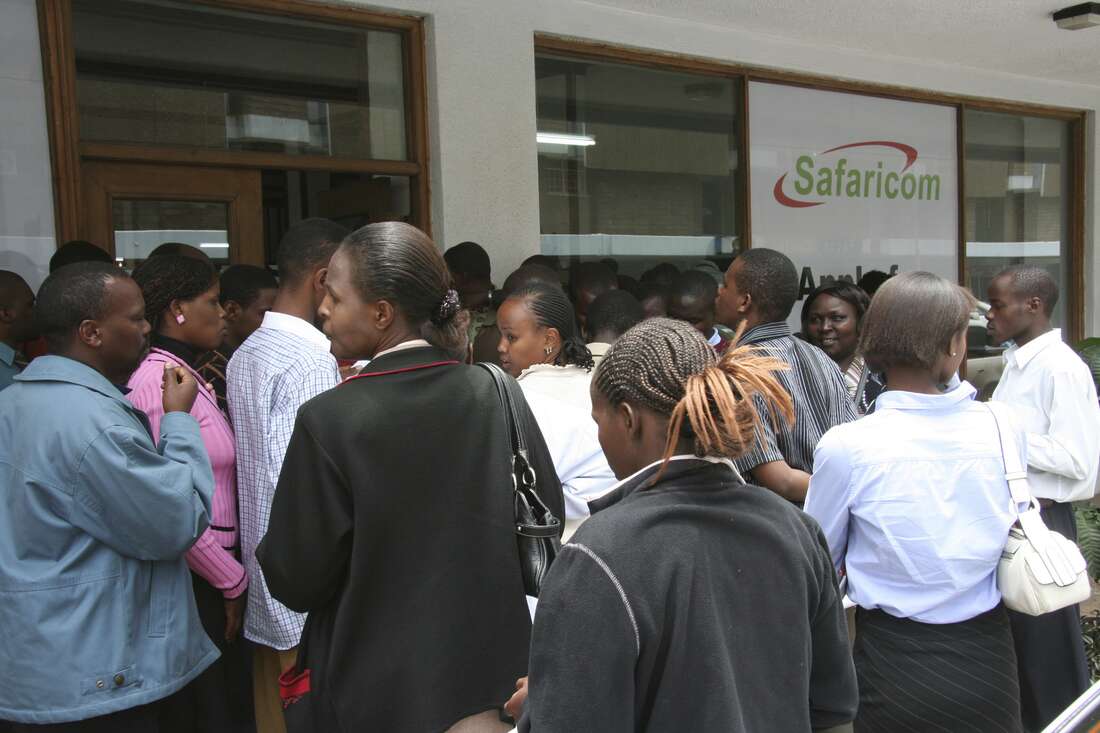Investors wait to buy shares during the Safaricom initial public offering in 2008. FILE PHOTO | NMG Revising down high free float requirements – a measure indicating the number of shares of a particular stock available for trading – has always been a hot topic especially when the Initial Public Offer (IPO) markets are ‘dead’.
Talking points usually tend to revolve around these core questions; what is the possible impact on liquidity, volatility and valuation? What’s the likely impact on corporate governance- large shareholders holding sway in decision making? Will a lower free float enhance the vibrancy of the local bourse? What’s the long-term impact on minority shareholders?
Currently, to list at the Nairobi Securities Exchange’s (NSE) main board, companies need to float at least 25 percent of their stock. The 25 percent public spread must also meet the minimum requirement of 1,000 public shareholders holding no fewer than 100 shares each.
Free float, which doesn’t include closely-held shares or shares owned by controlling investors or company owners, is an important part of the market.
Now, although lowering free float requirements seems strategic (to help attract IPOs), higher free float requirements are known for significant positive contributions to markets.
Attracting higher foreign participation and generating greater interest from institutional funds are some of the notable positives. Besides, higher-free floats proponents hold that lower free floats risk watering down corporate governance standards – a crucial component in public listings.
They also argue that since low float stocks have fewer shares available, it can be harder to find a buyer or seller for them. This may make them more volatile. To them, higher free floats means more shares for people to invest in.
That notwithstanding, the case for lower free floats has been growing stronger owing to our unique circumstances. The NSE last had an IPO in 2015 (which performed dismally at less than 30 percent subscription) and so the search for more IPOs is a rather desperate one.
Ideas are plenty. Moderates hold that lowering free float requirements is needful but should have safeguards such as a three-year limit when a revision upwards should occur.
A dual approach is also an option such as in Hong Kong where the 25 percent minimum free float can be reduced to 15 percent if the company’s market cap is above Sh130 million. Similarly, in the Philippines, the minimum offering to the public for an initial listing on the main board is between […]
